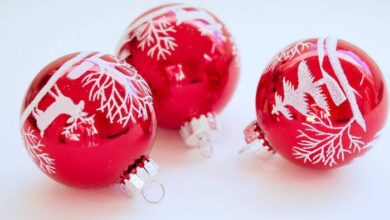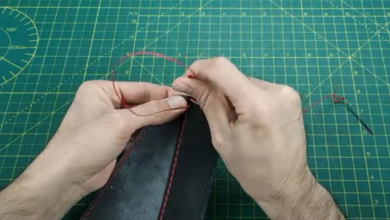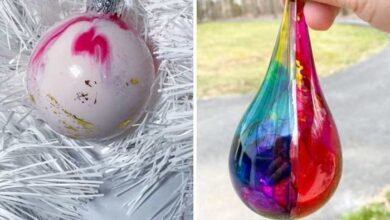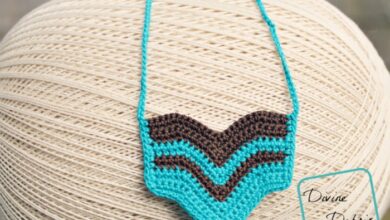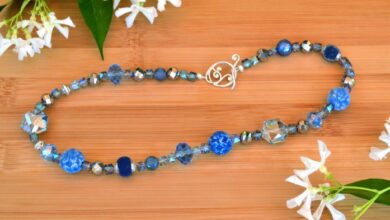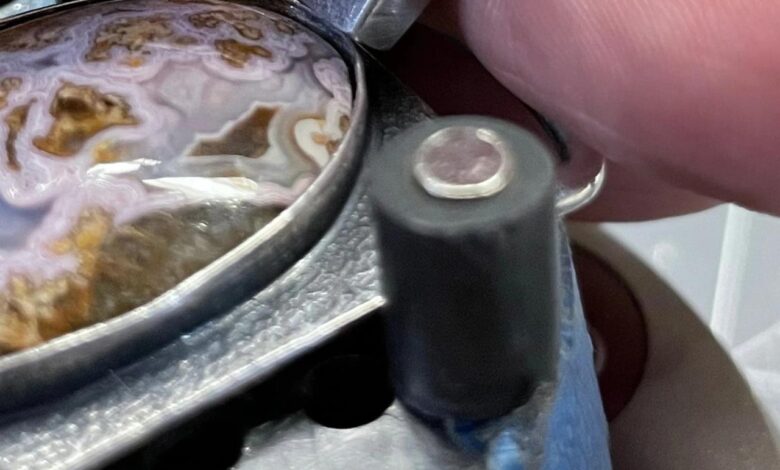
How to make leather stud bracelets is a craft that blends creativity with practicality, allowing you to create unique and stylish accessories. Whether you’re a seasoned leatherworker or a curious beginner, this guide will equip you with the knowledge and techniques to craft your own personalized bracelets.
From selecting the perfect leather and studs to mastering attachment methods and designing your own patterns, this step-by-step journey will lead you through every aspect of the process. We’ll explore different leather types, stud materials, and design ideas, ensuring you have the resources to create bracelets that reflect your individual style and preferences.
Choosing Leather and Studs
The foundation of a stunning leather stud bracelet lies in selecting the right leather and studs. The combination you choose will dictate the bracelet’s overall look, feel, and durability. Let’s dive into the world of leather and stud options to guide you in making the perfect choice.
Leather Types
The type of leather you choose will significantly impact the bracelet’s look, feel, and durability. Here’s a breakdown of popular leather choices:
- Full-Grain Leather:This is the top layer of the hide, known for its natural markings, durability, and ability to age beautifully. It’s also the most expensive option.
- Top-Grain Leather:This leather is similar to full-grain but has a smoother surface due to the top layer being sanded down. It’s less expensive but still durable and resistant to scratches.
- Nubuck Leather:This leather is sanded to create a velvety surface, giving it a unique look and feel. It’s soft and supple but requires more care as it’s susceptible to staining.
- Suede Leather:This leather is made from the underside of the hide, resulting in a soft, fuzzy texture. It’s delicate and requires careful handling but adds a touch of luxury to bracelets.
- Vegetable-Tanned Leather:This leather is tanned using natural plant extracts, resulting in a unique color and texture. It’s durable and eco-friendly, but it’s also more expensive and prone to water damage.
Stud Types
Studs are the decorative element that gives a leather bracelet its personality. They come in various materials, sizes, and finishes:
- Metal Studs:These are the most common and versatile type of stud. They can be made from various metals, including silver, gold, brass, copper, and stainless steel. Metal studs offer a range of finishes, from polished to oxidized, to match your style.
- Acrylic Studs:Acrylic studs are a more affordable option and offer a wide array of colors and patterns. They’re lightweight and comfortable to wear but may not be as durable as metal studs.
- Gemstone Studs:For a touch of elegance, gemstone studs are a great choice. They can be made from various gemstones, such as amethyst, turquoise, and agate, each offering unique colors and properties.
Choosing the Right Combination
When selecting leather and studs, consider the following:
- Style:Do you want a classic, bohemian, or edgy look? The leather and stud combination should reflect your personal style.
- Durability:If you want a bracelet that will last, choose a durable leather like full-grain or top-grain. Metal studs are also more durable than acrylic or gemstone studs.
- Comfort:Consider the feel of the leather against your skin. Some leathers are more comfortable than others, and stud size can also affect comfort.
Preparing the Leather
Before you can start crafting your leather stud bracelet, you need to prepare the leather strip. This involves cutting the leather to the desired size and ensuring a smooth, even edge.
Cutting the Leather, How to make leather stud bracelets
To start, measure your wrist and add about an inch for overlap. This will give you the length of your leather strip. You’ll also need to decide on the width of your bracelet. A standard width for a leather stud bracelet is about 1 inch, but you can choose a narrower or wider strip depending on your preference.
Making leather stud bracelets is a fun and easy way to personalize your style. I love using different colors and textures of leather to create unique pieces. While I’m always inspired by the latest fashion trends, I recently found myself drawn to the harvey nichols new york fashion week focus on bold accessories.
It’s given me a new perspective on how to incorporate studs into my designs, using them to create more statement pieces. Now, I’m experimenting with adding larger, more eye-catching studs to my leather bracelets, inspired by the runway’s embrace of statement jewelry.
Once you have the measurements, you can use a rotary cutter or a sharp knife to cut the leather to size. A rotary cutter is ideal for making clean, straight cuts, but a sharp knife can also be used with care.
Smoothing the Edges
Once the leather is cut, you’ll want to create a smooth, even edge. This will prevent the leather from fraying and make your bracelet look more polished. You can use a variety of tools to smooth the edges, including a leather burnisher, a sanding block, or a piece of fine-grit sandpaper.
If using a burnisher, apply a light pressure and rub the edge of the leather back and forth. A sanding block or sandpaper can also be used to smooth the edges, but be careful not to sand too aggressively, as this can damage the leather.
Cleaning and Conditioning
Before you start working with the leather, it’s important to clean and condition it. This will remove any dirt or grime and help to keep the leather supple and pliable. You can use a leather cleaner to clean the leather, followed by a leather conditioner to moisturize it.
Once the leather is clean and conditioned, you can start working with it to create your bracelet.
Attaching the Studs: How To Make Leather Stud Bracelets
Now that your leather strip is prepped and ready, it’s time to add the stars of the show – the studs! You have several options for attaching them, each with its own set of pros and cons. Let’s dive into the most popular methods.
Using Leather Glue
Leather glue is a quick and easy way to attach studs, especially for smaller projects. It’s a great option for beginners and those who want a clean, minimalist look.Here’s what you’ll need:* Leather glue specifically designed for bonding leather
- A small brush or toothpick for applying glue
- A flat surface to work on
- A weight or clamp to hold the studs in place while the glue dries
Here’s how to attach studs using leather glue:
- Apply a thin layer of glue to the back of the stud.Be sure to cover the entire surface of the stud.
- Place the stud on the leather strip in the desired location.
- Press down firmly on the stud for several seconds to ensure a strong bond.
- Use a weight or clamp to hold the stud in place while the glue dries.This is important to prevent the stud from shifting or coming loose.
- Allow the glue to dry completely before handling the bracelet.Drying time will vary depending on the glue used, so refer to the manufacturer’s instructions.
Advantages of using leather glue:* Easy to use:It’s a simple and straightforward process, even for beginners.
Making leather stud bracelets is a fun and rewarding craft! You can use various tools and techniques to create unique designs, and it’s a great way to express your creativity. If you’re looking for ways to organize your craft supplies, check out these 7 tried and tested bedroom storage tips to maximize your space.
With a well-organized space, you’ll be able to find your materials easily and focus on creating beautiful leather bracelets.
Clean and minimalist look
Leather stud bracelets are a fun and easy project for beginners, requiring just a few basic tools and materials. Once you’ve mastered the art of punching and securing studs, you might want to try your hand at something a bit more substantial, like a how to make a bolster pillow.
Bolster pillows are great for adding a touch of comfort and style to your home, and they can be made with a variety of fabrics and fillings. But if you’re looking for a quick and satisfying project, leather stud bracelets are always a great option.
The glue doesn’t leave any visible traces on the leather.
Fast drying time
Most leather glues dry quickly, allowing you to continue working on your bracelet promptly. Disadvantages of using leather glue:* Not as strong as other methods:Glue bonds can be prone to coming loose, especially if the bracelet is subjected to a lot of wear and tear.
Not suitable for all types of studs
Glue may not be strong enough to hold heavier or larger studs.
Using Rivets
Rivets are a more secure and durable option for attaching studs to leather. They are often used for heavier bracelets or those that will be subjected to a lot of wear and tear.Here’s what you’ll need:* Rivets designed for leather
- A rivet setting tool
- A hammer
- A flat surface to work on
Here’s how to attach studs using rivets:
- Mark the desired location for the stud on the leather strip.
- Use a punch or awl to create a hole in the leather.The hole should be slightly smaller than the rivet’s shank.
- Place the rivet through the hole in the leather and the stud.The head of the rivet should be on the side of the leather strip that you want to be visible.
- Use the rivet setting tool to flatten the rivet’s shank.This will secure the stud to the leather.
- Use a hammer to tap on the setting tool until the rivet is fully flattened.
Advantages of using rivets:* Strong and durable:Rivets create a very secure bond that is resistant to wear and tear.
Suitable for all types of studs
Rivets can be used to attach studs of any size or weight.
Versatile
Rivets can be used to create a variety of looks, from sleek and minimalist to bold and statement-making. Disadvantages of using rivets:* More time-consuming:Riveting requires more steps than using glue.
Requires specialized tools
You will need a rivet setting tool and a hammer to attach rivets.
Stitching
Stitching is a traditional method of attaching studs to leather, and it offers a high level of durability and a unique aesthetic. It’s a more advanced technique that requires practice and patience.Here’s what you’ll need:* A leather sewing needle
- Waxed thread
- A thimble
- A stitching pony or clamp to hold the leather in place
- A stitching awl or punch to create holes for the stitching
Here’s how to attach studs using stitching:
- Mark the desired location for the stud on the leather strip.
- Use a stitching awl or punch to create holes around the stud.The holes should be spaced evenly and large enough to accommodate the thread.
- Thread the needle with waxed thread.
- Secure the thread to the leather strip using a knot or a backstitch.
- Stitch around the stud, passing the needle through each hole.
- Secure the thread on the back of the leather strip with a knot or a backstitch.
Advantages of stitching:* Strong and durable:Stitching creates a very secure bond that is resistant to wear and tear.
Unique aesthetic
Stitching adds a decorative element to the bracelet.
Versatile
Stitching can be used to create a variety of looks, from simple and understated to elaborate and intricate. Disadvantages of stitching:* Time-consuming:Stitching requires a lot of time and patience.
Requires practice
Stitching is a more advanced technique that requires practice to master.
Specialized tools
You will need a leather sewing needle, waxed thread, a thimble, a stitching pony or clamp, and a stitching awl or punch.
Creating the Bracelet Design
Now that you’ve chosen your materials, it’s time to get creative and design your leather stud bracelet. This is where you can really let your personality shine! There are endless possibilities when it comes to design, so don’t be afraid to experiment and have fun.
Design Ideas
The beauty of leather stud bracelets is their versatility. You can create a simple and minimalist design, or go all out with intricate patterns and bold colors. Here are some ideas to inspire you:
- Geometric patterns: Create a visually striking bracelet by arranging studs in geometric shapes like squares, triangles, or circles. You can use studs of different sizes and colors to add depth and dimension.
- Floral motifs: For a more feminine touch, incorporate floral patterns into your design. Use small studs to create delicate petals or larger studs to form the center of a flower.
- Abstract designs: Let your imagination run wild and create abstract patterns using studs of different sizes, shapes, and colors. This is a great way to express your unique style.
Color Combinations
Color plays a crucial role in creating a visually appealing bracelet. You can choose a monochromatic color scheme for a sleek and sophisticated look, or experiment with contrasting colors for a bold and eye-catching design.
- Monochromatic: Use different shades of the same color for a cohesive and elegant look. For example, you could use different shades of brown or black to create a classic and timeless bracelet.
- Complementary colors: These are colors that sit opposite each other on the color wheel and create a high-contrast look. Examples include red and green, blue and orange, or yellow and purple.
- Analogous colors: These are colors that sit next to each other on the color wheel and create a harmonious and balanced look. For example, you could use shades of blue, green, and yellow to create a calming and serene bracelet.
Stud Arrangements
The way you arrange the studs on your bracelet will significantly impact its overall design. Consider using different stud sizes and shapes to create visual interest and texture.
- Linear: Arrange studs in a straight line along the length of the bracelet for a simple and minimalist look.
- Clustered: Group studs together to create visual emphasis and add dimension to your design. This can be done in a random or organized manner.
- Diagonal: Arrange studs in a diagonal pattern across the bracelet for a dynamic and modern look.
Incorporating Additional Embellishments
To further enhance your bracelet design, consider incorporating additional embellishments like beads, charms, or decorative stitching.
- Beads: Beads can add color, texture, and visual interest to your bracelet. You can choose from a wide variety of materials, including glass, wood, metal, and stone.
- Charms: Charms can add a personal touch to your bracelet. You can choose charms that represent your hobbies, interests, or personality. For example, you could add a charm of a musical note, a book, or a flower.
- Decorative stitching: Adding decorative stitching to your bracelet can enhance its design and add a touch of elegance. You can use different types of stitching, such as cross-stitch, whip stitch, or backstitch, to create different patterns and textures.
Considering the Wearer’s Style
When designing your bracelet, it’s essential to consider the wearer’s style and preferences. If you’re designing a bracelet for someone who prefers a minimalist aesthetic, you might opt for a simple design with a few studs in a neutral color.
However, if you’re designing a bracelet for someone who enjoys bold and colorful accessories, you might create a more elaborate design with contrasting colors and multiple embellishments.
Finishing the Bracelet
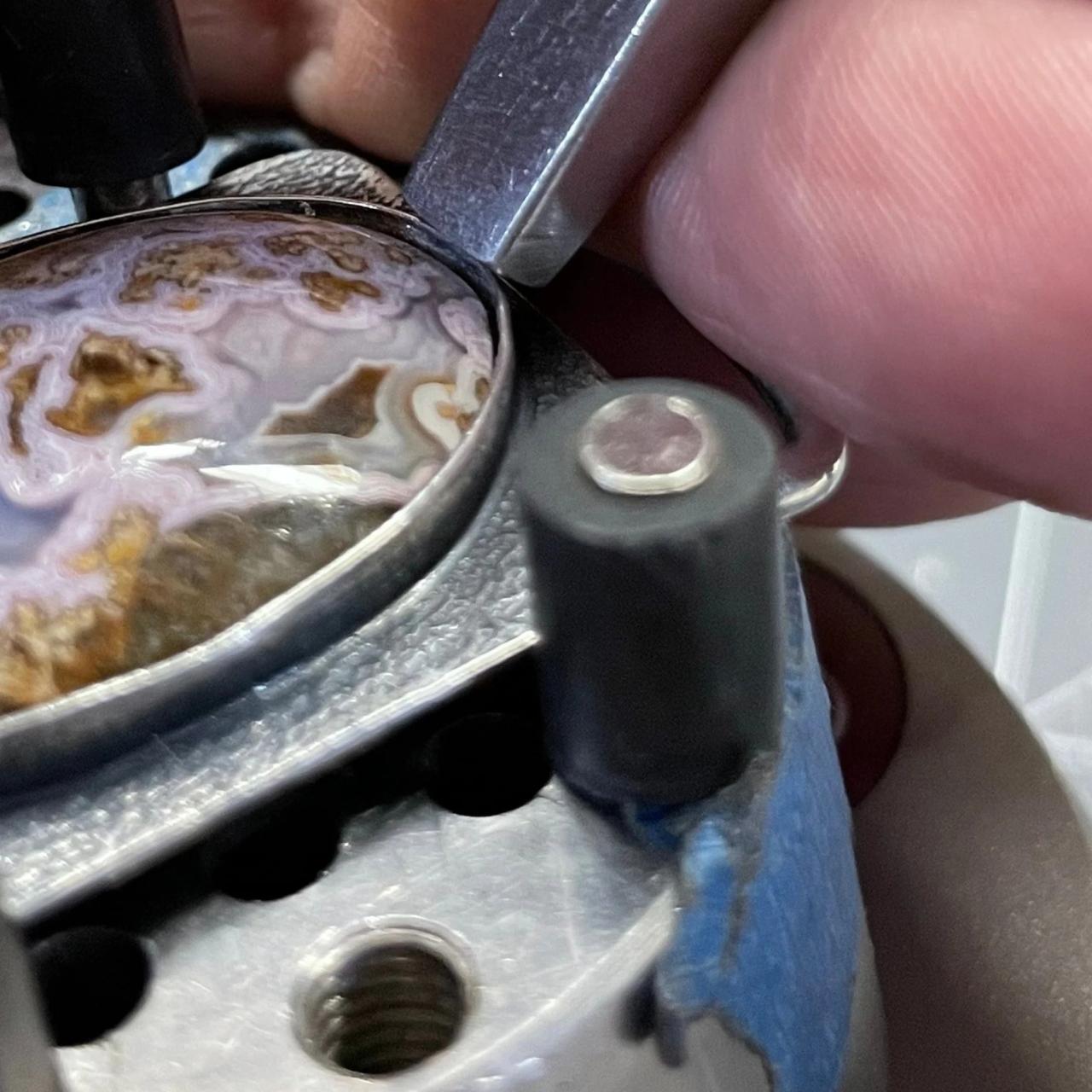
Giving your leather stud bracelet a final touch is crucial for both its aesthetics and longevity. Finishing involves sealing the edges and adding a protective coating, ensuring a polished look and protecting the leather from the elements.
Sealing and Finishing Techniques
Sealing and finishing techniques protect the leather from moisture, dirt, and wear, enhancing its lifespan and preserving its beauty.
- Edge Burnishing: This technique smooths and seals the raw edges of the leather using a burnishing tool and a leather conditioner. The tool’s pressure compacts the fibers, creating a smooth and polished edge.
- Applying Leather Sealant: Leather sealant creates a protective barrier against water, stains, and scratches. It’s applied with a brush or cloth and allowed to dry completely. There are various sealant types, including wax-based, acrylic, and polyurethane sealants, each with its own properties.
- Using Leather Dye: Leather dye adds color and depth to the leather, enhancing its appearance and protecting it from fading. Dyeing can be done before or after sealing, depending on the desired effect.
Adding a Closure
A secure closure completes the bracelet, ensuring it stays on your wrist comfortably and stylishly.
- Buckle: Buckles are a classic closure for leather bracelets. They come in various styles and materials, allowing you to customize the look.
- Hook and Eye: This closure is simple and secure, often used for thinner bracelets.
- Magnetic Clasp: Magnetic clasps are convenient and easy to use, providing a secure hold. They are available in different sizes and finishes.
Safety Precautions
Leather crafting, especially when incorporating studs, involves sharp tools and potentially hazardous materials. It’s crucial to prioritize safety throughout the process to prevent injuries and ensure a positive crafting experience.
Working with Sharp Tools
- Always use sharp tools with caution, as they can cause cuts and punctures. Handle them with care and avoid distractions while working.
- Store sharp tools in a designated area, away from reach of children and pets. This prevents accidental injuries and ensures the tools remain in good condition.
- Use a cutting mat or a stable surface when working with sharp tools to avoid slipping or accidental cuts.
- Keep your workspace clean and organized to prevent accidents. Remove any clutter that could obstruct your work or create tripping hazards.
Handling Studs
- Use pliers or a stud setting tool to securely attach studs, avoiding accidental pricks or punctures. This ensures the studs are firmly attached and reduces the risk of them coming loose.
- Handle studs with care, as they can be sharp and easily pierce skin. Always use protective gear, such as gloves, to prevent accidental punctures.
- Keep studs organized in containers or trays to prevent them from rolling away and causing accidental foot injuries. This ensures a safe and organized workspace.
- Store studs in a safe location, out of reach of children and pets, to prevent accidental ingestion or injury. This ensures the studs are kept safe and prevents potential harm.
Working in a Well-Ventilated Area
- Leatherworking can involve dust and fumes, so working in a well-ventilated area is essential to prevent respiratory irritation. Open windows or use a fan to ensure proper air circulation.
- Use a dust mask or respirator when working with leather to prevent inhaling dust particles. This protects your respiratory system from potential health hazards.
- Avoid working in enclosed spaces, especially for extended periods, as this can lead to a buildup of dust and fumes. Opt for well-ventilated areas for a safer working environment.
- Keep a fire extinguisher readily available in your workspace, especially when working with leather or other flammable materials. This ensures you’re prepared in case of a fire emergency.
Protective Gear
- Wear safety glasses or goggles to protect your eyes from flying debris or sharp objects. This ensures eye safety during the crafting process.
- Use gloves to protect your hands from cuts, punctures, and contact with potentially harmful materials. Choose gloves appropriate for the task at hand.
- Wear closed-toe shoes to protect your feet from accidental drops or punctures. This ensures foot safety and prevents injuries from falling objects or sharp tools.
- Tie back long hair and loose clothing to prevent them from getting caught in machinery or tools. This ensures safety and prevents accidents involving loose garments.

